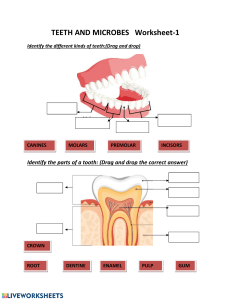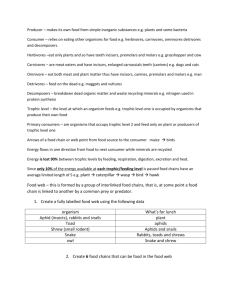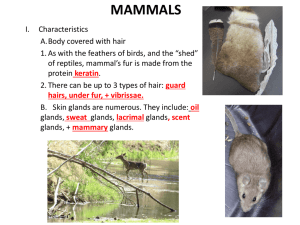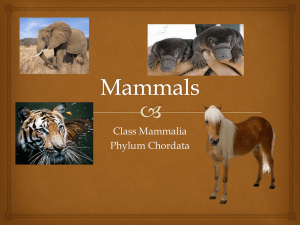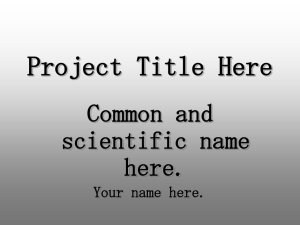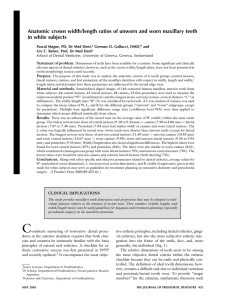Mammal Characteristics
advertisement
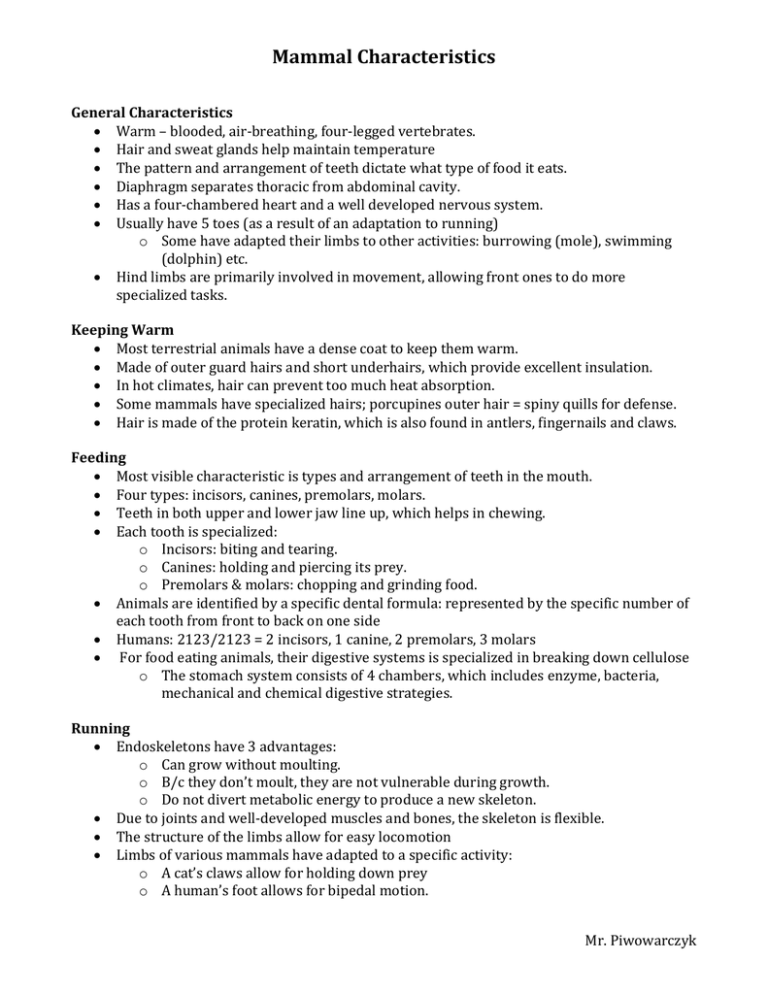
Mammal Characteristics General Characteristics Warm – blooded, air‐breathing, four‐legged vertebrates. Hair and sweat glands help maintain temperature The pattern and arrangement of teeth dictate what type of food it eats. Diaphragm separates thoracic from abdominal cavity. Has a four‐chambered heart and a well developed nervous system. Usually have 5 toes (as a result of an adaptation to running) o Some have adapted their limbs to other activities: burrowing (mole), swimming (dolphin) etc. Hind limbs are primarily involved in movement, allowing front ones to do more specialized tasks. Keeping Warm Most terrestrial animals have a dense coat to keep them warm. Made of outer guard hairs and short underhairs, which provide excellent insulation. In hot climates, hair can prevent too much heat absorption. Some mammals have specialized hairs; porcupines outer hair = spiny quills for defense. Hair is made of the protein keratin, which is also found in antlers, fingernails and claws. Feeding Most visible characteristic is types and arrangement of teeth in the mouth. Four types: incisors, canines, premolars, molars. Teeth in both upper and lower jaw line up, which helps in chewing. Each tooth is specialized: o Incisors: biting and tearing. o Canines: holding and piercing its prey. o Premolars & molars: chopping and grinding food. Animals are identified by a specific dental formula: represented by the specific number of each tooth from front to back on one side Humans: 2123/2123 = 2 incisors, 1 canine, 2 premolars, 3 molars For food eating animals, their digestive systems is specialized in breaking down cellulose o The stomach system consists of 4 chambers, which includes enzyme, bacteria, mechanical and chemical digestive strategies. Running Endoskeletons have 3 advantages: o Can grow without moulting. o B/c they don’t moult, they are not vulnerable during growth. o Do not divert metabolic energy to produce a new skeleton. Due to joints and well‐developed muscles and bones, the skeleton is flexible. The structure of the limbs allow for easy locomotion Limbs of various mammals have adapted to a specific activity: o A cat’s claws allow for holding down prey o A human’s foot allows for bipedal motion. Mr. Piwowarczyk
